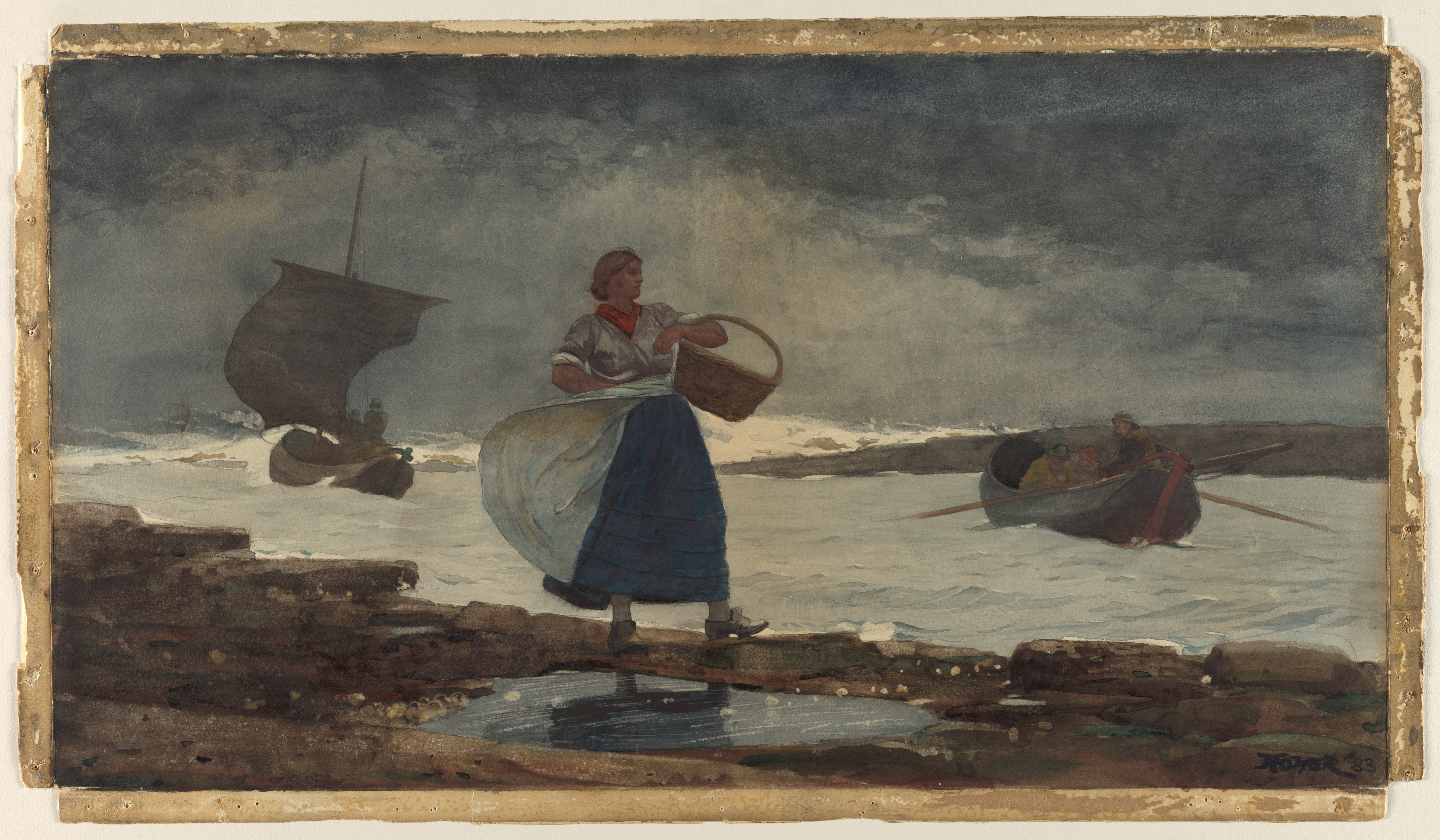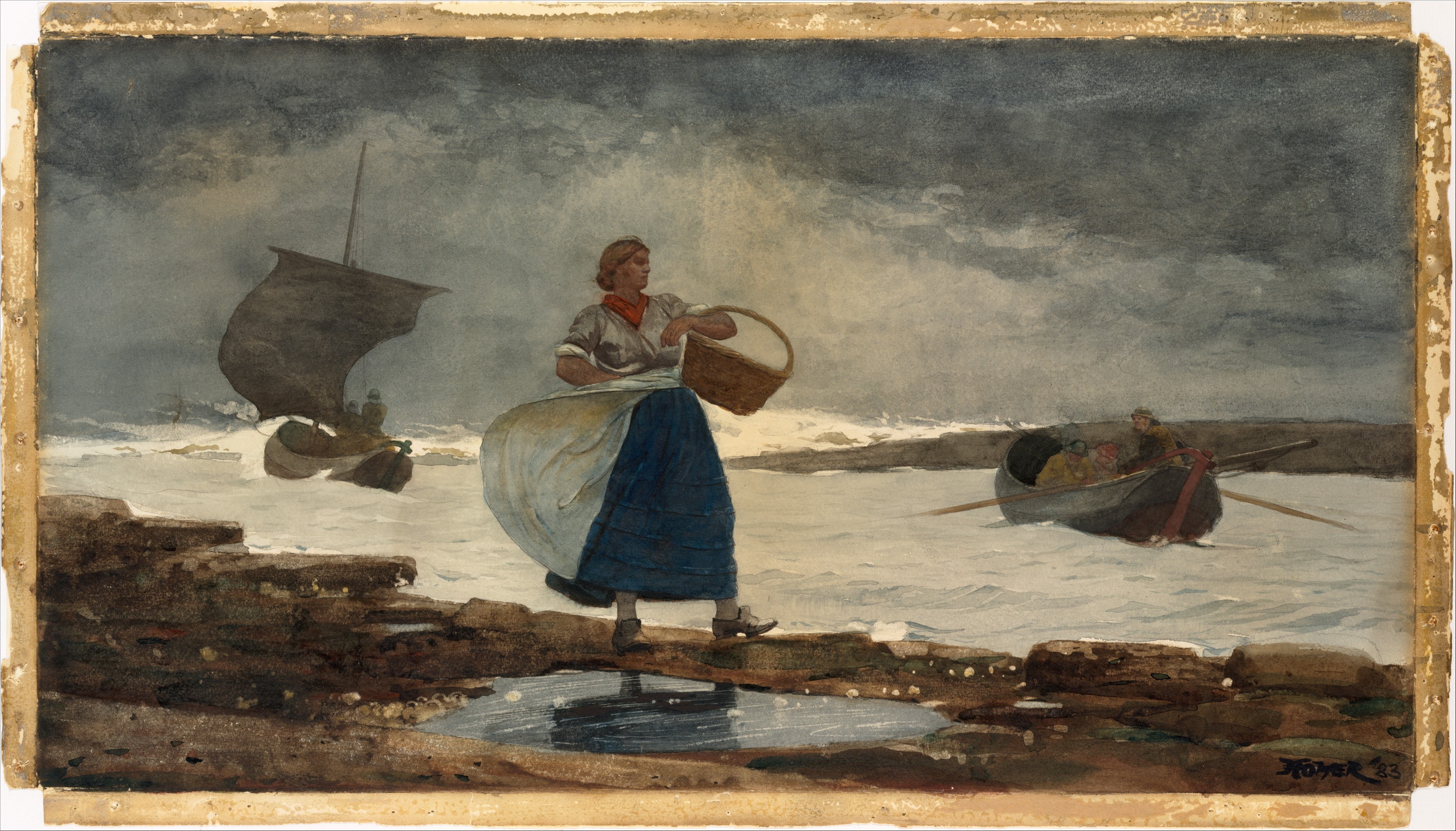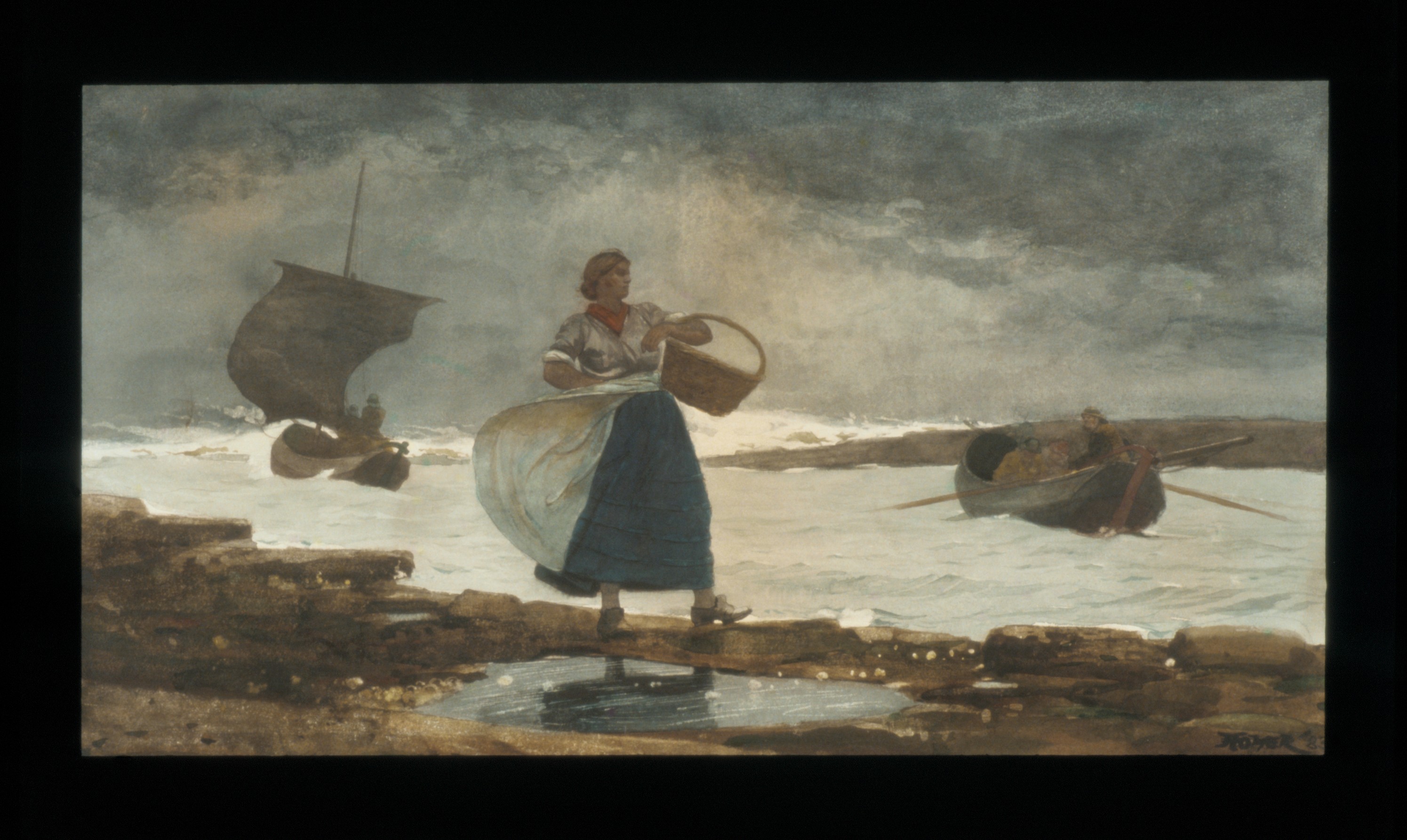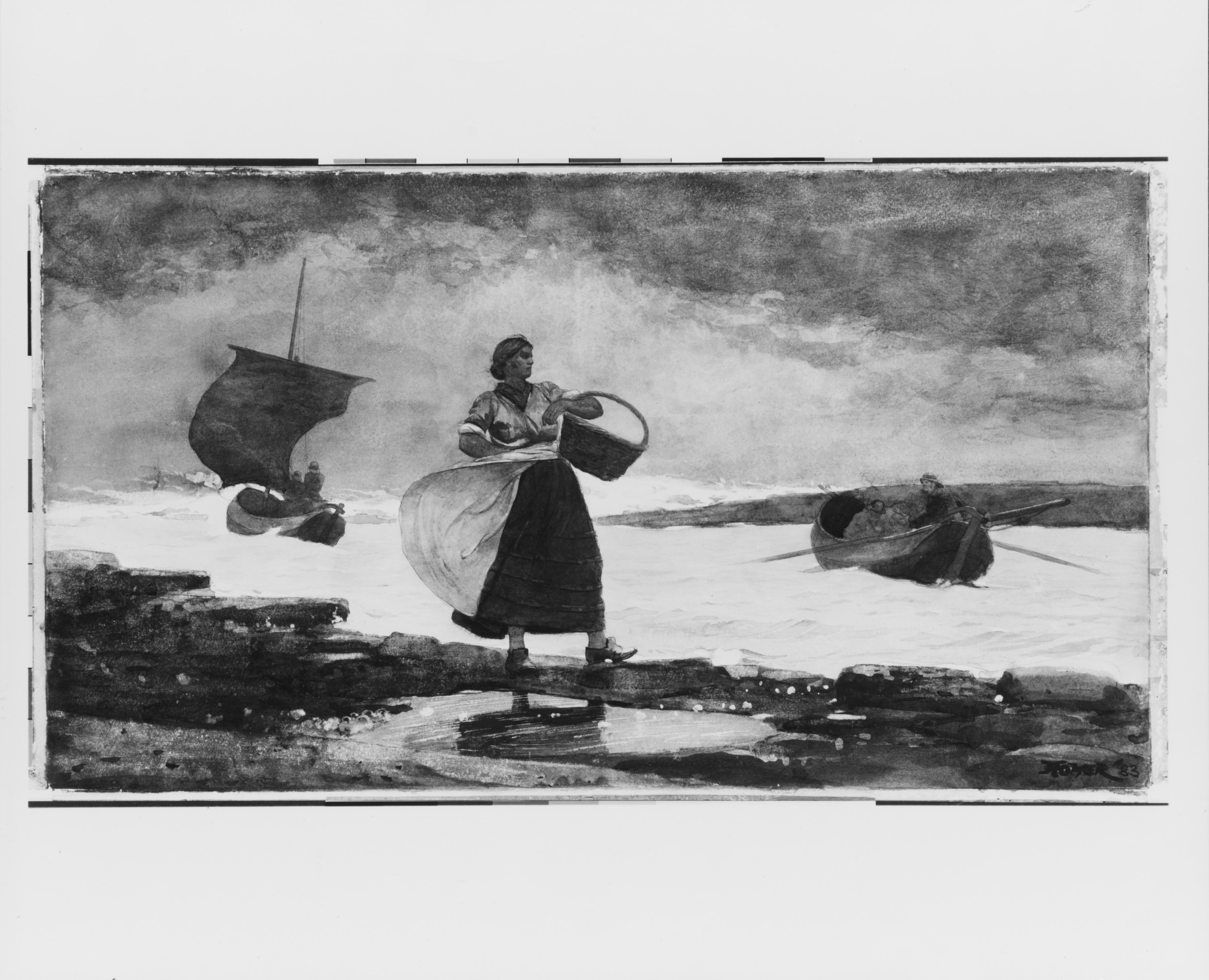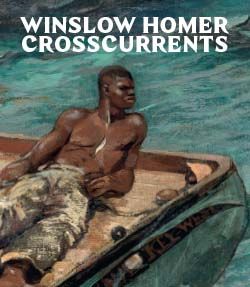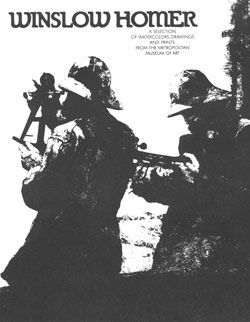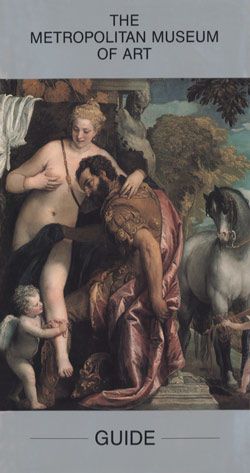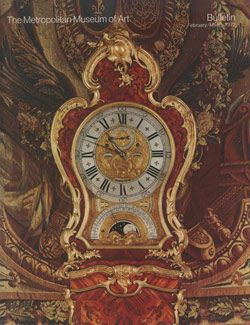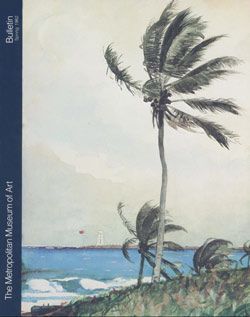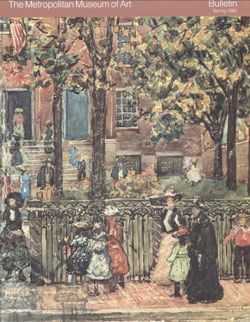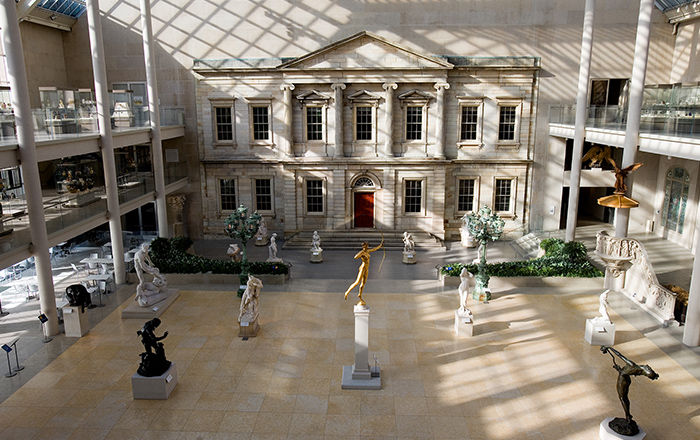Inside the Bar
Winslow Homer American
Not on view
On large sheets of paper such as the one used for this work—produced on his return to the United States but depicting a North Sea fisherwoman—Homer perfected traditional English watercolor techniques, laying out compositions with broad, overlapping washes of color. Critically praised when it was exhibited in New York, Inside the Bar is seen as a benchmark of the ambitious turn in Homer’s art, foregrounding heroicized figures engaged in dramatic action. Viewers were particularly taken with the power of the woman, positioned between two boats bearing men: “This woman is not made of the stuff that is swept away. . . . She is transformed by the terrible beauty of the time and place; her stride is magnificent; she is part of the storm itself."
#4361. Winslow Homer: Crosscurrents. Inside the Bar
This image cannot be enlarged, viewed at full screen, or downloaded.
This artwork is meant to be viewed from right to left. Scroll left to view more.


